
As I mentioned in my Atlantis: The Lost Empire entry, I was a pretty faithful Disney viewer when I was a lad. I went to every single Disney movie released from when I was five to when I was twelve (Aladdin through Fantasia 2000, for those keeping score at home), and owned a good chunk of the canon on VHS. After the new millennium hit, though, a whole host of happenstances prevented me from seeing any more Disney movies theatrically until 2008. I had just turned 13, the precise age when pre-teen boys (in all of their tough guy glory) decide that, eh, Disney’s just not cool no mo’. Y2K also seemed to usher in a new breed of Disney film, a breed that somewhat suffered from an identity crisis, and never felt particularly “Disney;” from 2000 to 2004, Disney fans were treated to transmogriphied llamas, Jules Verne-style adventure stories, and heroic bovines. I sure as hell didn’t know what to make of them, and neither did audiences, for the studio (save for one property) went without a major hit for the better part of a decade.
Because of this perfect storm of circumstance, the Disney films released during the first five years of the 2000’s have a fascinating, alien feel to me—the Disney craftsmanship is clear and present, but the movies simply don’t feel like they gel well with the rest of the Disney canon, giving the seven features an Island of Misfit Toys-esque feeling of deviance. Perhaps no film typifies this better than 2002’s Treasure Planet, directed by Ron Musker and John Clements. History has made it well-known that Planet was Clements and Musker’s dream project, having consistently pitched the idea since they were first handed the director’s chair to The Great Mouse Detective in 1986. Planet is a mix of Renaissance-era Disney tropes (yearning hero, comic side companions, super-obvious joke timing, etc.) and new-school, post-Linkin Park changes (unconventional art style, heavy doses of action, no singing, etc.), and its mish-mash of disparate parts, Frankensteined together into one 95-minute spectacle is, frankly, unique and oddly compelling.
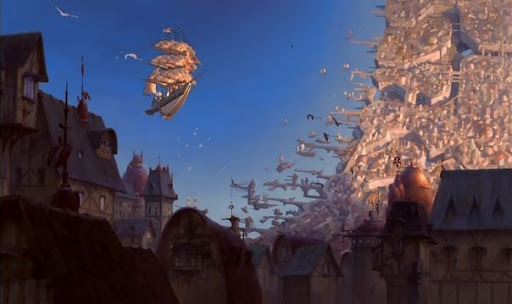
Treasure Planet starts with a narration about the Dread Pirate Roberts—no, sorry, Captain Flint—and his murderous crew of space scalawags, who plundered the stars for many years until he mysteriously disappeared. Legends say that Flint hid his massive treasure trove on some uncharted world, though in these enlightened days, of course, no one believes a word of it. We then cut to young Jim Hawkins (Joseph Gordon Levitt), a teenager with a delinquent streak and knack for getting into trouble, much to the chagrin of his single mother (Laurie Metcalf). Jim wants more excitement in his life, and soon gets it when a, er, lizard named Billy Bones crash lands at his mother’s inn and dies shortly thereafter, but not before bequeathing a small chest to Jim and giving him a whispered warning about a cyborg.
In what is surely not coincidental timing, a group of pirates show up and trash the inn while Jim, mother, and family friend Dr. Doppler (David Hyde Pierce) make their getaway. After their escape, Jim opens the chest given to him by Bones, and discovers a map to a small, remote world—Treasure Planet! Jim’s mother is hesitant about letting him go, but relents after some convincing on Dr. Doppler’s part. The two make their way to the nearest space port, and manage to hire a ship, helmed by Captain Amelia (Emma Thompson) and Mr. Arrow (Roscoe Lee Brown). They also hire a crew; sketchy, thuggish, and led by the enigmatic John Silver (Brian Murray), a cyborg with a mechanical arm, eye, and leg (could this be the guy?!). Silver wants to keep Jim from asking too many questions about the crew, so he takes him under his wing, and the two develop a bond so deep, it could only be presented to us as a montage.
The time comes, however, when the crew shows its true colors: they’ve been waiting to mutiny and take the treasure for themselves. Jim, Doppler, and Amelia manage to escape, and the race to find the mother lode is on. Silver wants the treasure, but he cares for Jim as well. Will the two be able to make up and find the treasure together? Or will they kill each other until there is nothing left?
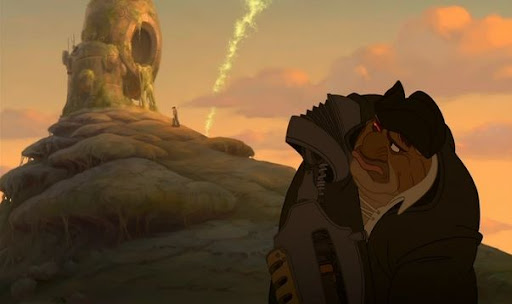
Out of all of the films in the Disney Animated Features canon that I’ve seen (and I’ve seen almost all of them), Treasure Planet is by far the strangest, most Out There of the lot. It’s not a Bad film, and there are certainly worse in the canon, but I am not at all shocked that the film did poorly in the box office (nothing brings the family together like a Robert Louis Stevenson novel set in space, amiright?).
One of the more divisive elements of Treasure Planet that I rather happen to enjoy is the art style. Musker and Clements employed what they called the “70/30” rule, where 70 percent of the art is informed by Victorian England, and sci-fi elements comprised the remaining 30. The result is an imaginative blend familiar and fantastical, whose highlights include enormous sea-faring galleons (wildly impractical-looking, but who cares?) and a crescent moon that slowly reveals itself to be a harbor/space port.
Elsewhere, the film’s art can be a bit more hit-or-miss. Treasure Planet’s universe is inhabited by a slew of interesting-looking creatures, but the designs are a bit over-the-top in places (e.g. the dude with a torso for a face, or that stupid, stupid Flatulan character). Many of the characters are well-animated, with Dr. Doppler acting rather expressively, and John Silver’s cyborg arm looking totally effing sweet, but both Jim and his mother look just plain weird, as though the Disney team forgot how to draw human beings. Also, I’ve decided that I have as much use for Musker and Clements’ slime effects as I do for Don Bluth’s smoke effects (i.e. they both annoy the crap out of me).
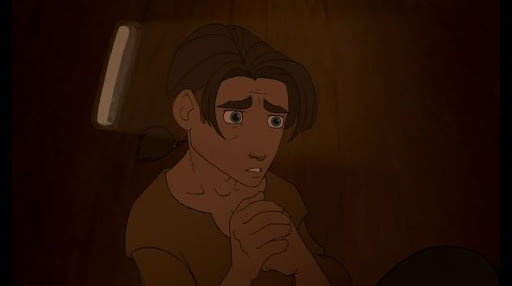
For all of the liberties that it takes with the art style, Treasure Planet is a surprisingly faithful adaptation of the novel, or at least as faithful as other adaptations. Most of the elements are here: Billy Bones, Long John Silver, Ben Gunn (whose shipwreck-induced madness is handled rather cleverly in the film), the stockade, and Jim’s back-and-forth travels between ship and shelter. The ending is handled differently, several characters are combined or changed, and much of the violence has been toned down, but Planet is closer to its source material than, say, Oliver & Company, and open-minded fans of the book may enjoy spotting the similarities.
Treasure Planet’s cast is split right down the middle between well-characterized and pants-on-head aggravating. I enjoyed John Silver, who is made slightly more sympathetic than in the book, and is more compelling as a result; he’s definitely one of the film’s antagonists, but his relationship with Jim puts him in a more positive light, and his conflict between being Jim's mentor and becoming obscenely wealthy is a rewarding one to watch unfold. Captain Amelia is a fun slice of dry, British sarcasm (Emma Thompson seems to be channeling the same well of stuffy, Victorian mannerisms that Minnie Driver did in Tarzan), and I liked how David Hyde Pierce works his Niles bit for the ruffled, uptight Dr. Doppler.

On the other side of the coin stands the non-John Silver members of the mutinying crew (that stupid, stupid Flatulan character), Morph (the stand-in for Silver’s parrot, who spends most of the film being obnoxious, rather than cute), and one of the most annoying Jar Jars in a Disney picture (that he’s voiced by Martin Short certainly does not help his case). Most disappointing is the movie’s portrayal of Jim, who is a total caricature of late 90’s/early 2000’s angst; he un-ironically scoffs “Whatever,” and smolders with generic rage, making him a less-than-compelling protagonist.
Speaking of late 90’s/early 2000’s, I wonder if anything in this movie could entrench it as firmly in the era of the Dot Com bubble as Goo Goo Dolls-frontman John Rzeznik’s two contributions to the soundtrack. Both “I’m Still Here” and “Always Know Where You Are” are alternative, pop-rock songs reminiscent of Creed and Vertical Horizon, poppy in an “Are you ready to soft rock?!” sort of way, and featuring breathy, vaguely emotional lyrics about, I dunno, not fitting in or something. Apparently “I’m Still Here” went on to chart reasonably high on the Adult Contemporary charts, which is less and less surprising the more I think about it.
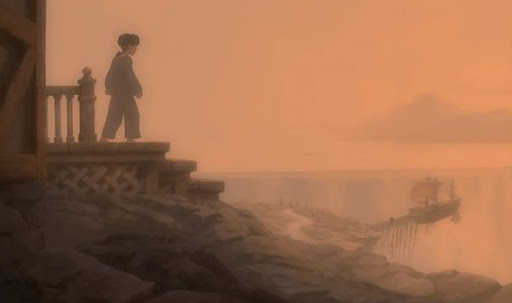
For all of its rough edges and eccentricities, though, I like Treasure Planet. It’s uneven, over-eager to be cool and different, and just plain doesn’t work in places, but its imperfections make it fairly endearing to me, and I appreciate the risks it takes. It’s not a film that absolutely needs to be seen, but curious Disney fans should give it a shot, if only to experience one of the weirdest films in the entire canon.
Top Three Songs
- “I’m Still Here”
- “Always Know Where You Are”
- —
Favorite Scene
- Jim’s opening Solar Surfer sequence
Favorite Character
- John Silver

The Jar Jar
- B.E.N.

How I Watched It
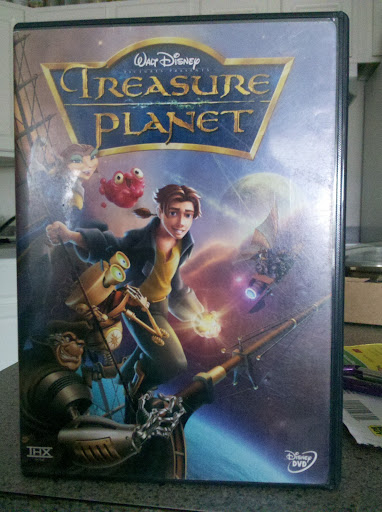
The nice thing about post-Renaissance Disney movies is that they’re exceptionally cheap on Amazon. I snagged my used copy for somewhere around $6, including shipping, and I’m fairly confident that demand for the film isn’t going to spike any time soon.
Treasure Planet looks reasonably good on DVD, with anamorphic widescreen and a decent-looking transfer. As always, I failed to engage the surround sound during my viewing, but the DVD was released sometime in 2003, so it’s reasonable to assume that Disney had a handle on the home theater basics (the movie is presented in THX, for what it’s worth).
The supplements are meager, which is not surprising considering how spectacularly the film tanked at the box office, but there are a few neat bonus features. Animation buffs will enjoy learning how John Silver’s eye, leg, and arm were first generated in a computer, then transferred over to the finished product. There’s also a few small bit on how the illustrations for Treasure Island informed part of the film’s look, and Clements and Musker explain how the 70/30 rule works (though, because you’ve read this far, you already know. Lucky you). The extras are slight, but it’s not like the film needs a second disc for more goodies, and overall, the package feels whole and complete, rather than woefully lacking like some releases.
